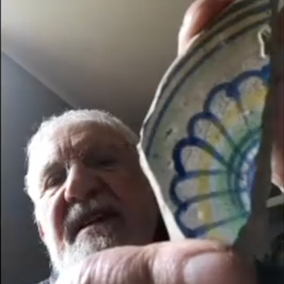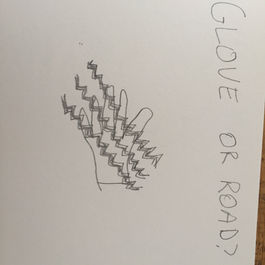
There is a particular quality of silence in an empty room, especially a family home when the door slams loudly and voices dissipate along the street. It is as if the air exhales, released from its constant disruption, constant churning by children running up the stairs and through doorways. For a moment, it is given reprieve to settle into the spaces left behind.
Material Presence 2018
May 2019
Ceramics Art and Perception: article 'Pacing the Perimeter'
May 2019
Ceramics Art and Perception: article 'Pacing the Perimeter'
Ceramics in Conversation
...at the same time, a relational turn was taking place, fuelled by a systemic interest in the nature of creativity. This shift was timely in regard global events, from the refugee Crisis in 2016 to growing awareness of ecological responsibilities and practice begins to pull all areas of concern together: creative thinking, clay, and ethnographic study...
Small Talk: Conversations
in Clay
‘Small Talk’ examines the sociality of clay on a nuanced level, by applying approaches commonly used in the practice of Oral History, to devise model of co-construction that can sensitize those involved to the nature of human interaction, and act as a register of the ‘smaller stories’ in the details of shared experiences.
Collaboration with Kim Norton and Sam Lucas
The beginnings of taking 'Flightlines' into clay
Flightlines:
Conversations
about
Life with Clay
an approach that moves beyond the focus of the studio, in accounting for creativity that includes the entanglement of multiple, interconnected demands such as those of family, social / community, or wider global/ecological events.
NCECA / ICF / COCA
Snippets from conversations during ICF and soon to be transferred into a podcast series
A Life Told Through Shards
it occurred to me that you really enjoy how stories thread themselves within and around objects, so I was hoping we could use the ceramic shards you have collected since childhood, as a timeline to explore your life with clay, how they each contain their own histories and continue to influence your ceramics …
Article for Ceramics Art and Perception on Behalf of
Llantarnam Grange
Interview conducted as part of Walters solo show at Llantarnam grange Arts Centre
Material Presence:
a Poetic Turn
To explore the metaphoric potential of the work I wove points of reflection, pauses in proceedings where I could repeat salient words/phrases, and read passeges of poetry/prose prior selected to illustrate points. The audience were further encouraged to draw and write in response to this in small sketchbooks which they scanned and emailed to me after the event.
Passages:
key
critical positions
Meaning can be teased from an artwork simply by shifting the frame from which view it.Taking each of the core positions commonly used in art analysis: Semantics / Formalist / Phenomenological / historical / psychoanalytical we draw out the narrative potential of Claire Curneen's exhibition 'Passages' her first Wales based solo exhibition.
Interview conducted as part of Zoe's solo show at Llantarnam grange Arts Centre
Interview conducted as part of Claire's solo show at Craft in the Bay. Makers Guild, Cardiff
Placement
Ceramic
Connections
The title was not simply a convenience in grouping artists from different places, but embodied the potential of ceramics to reflect and interpret aspects of our environment, society and culture. Taking each artist in turn we set out the diversity of ways in which ceramics achieves this from geology, geography, historical lineage, material values and souvenir.
Fragmented Figure
There is a close association between skin and the expression of thought, When blushing, wailing, or sweating
we can be, albeit momentarily, taken over by its conveyance of emotion before we are consciously aware of our own feelings, what Conor describes describes as 'thinking through the skin'
The fragmented Figure
Interpreting Ceramics Issue 8




































